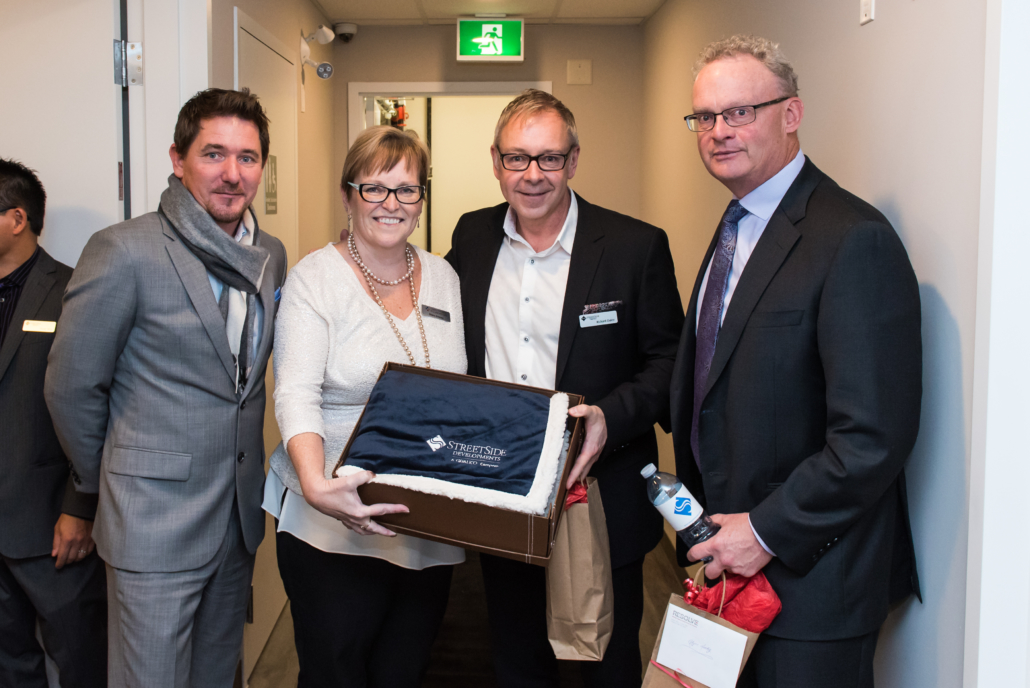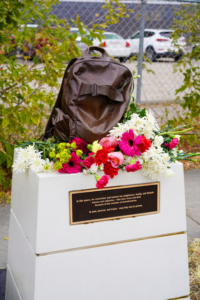
On November 24, 2016, StreetSide Developments: A Qualico company, alongside the RESOLVE Campaign, HomeSpace Society, the Calgary Homeless Foundation and Alpha House, hosted the grand opening of Aurora on the Park. This 25 unit, fully accessible building was constructed specifically to support vulnerable Calgarians experiencing homelessness. Named after the Aurora glow that symbolizes the dawn of a new day, the grand opening was a celebration of the beginning of a new life and a new home for these 25 individuals. Elder Casey Eagle Speaker blessed Aurora’s opening and spoke of the dawning of new hope for these 25 Calgarians who needed it most.

Each of the clients’ homes are designed for wheelchair accessibility and are completely barrier free. The common areas, a space where clients can gather for meals and to socialize, are also fully accessible. While each suite has been built for tenants to be able to cook for themselves, Meals on Wheels will also visit daily to provide tenants with healthy, well rounded meals.
The tenants of Aurora on the Park will receive full support from the Alpha House Society who will be the case manager for the building. This allows tenants to access support twenty-four hours a day, seven days a week.
Aurora on the Park is the third building to be completed in a series of purpose-built apartments that are constructed by Calgary home builders for the Calgary Homeless Foundation through the RESOLVE Campaign and with support from the Government of Alberta. “The partnership of all levels of government, Calgary Home Builders and the RESOLVE Campaign continues to make ending homelessness possible in Calgary,” says Diana Krecsy, President & CEO of CHF. “Aurora on the Park represents more than just an accessible home for 25 individuals experiencing homelessness. It represents hope and a better future for them and for all Calgarians.”
For more information on Aurora on the Park, please visit the RESOLVE Campaign website or read StreetSide Developments’ blog, Grand Opening of Aurora on the Park.

 With tears, flowers, and a song for a friend who can no longer be found, Calgarians gathered on a cold morning on October 13, 2021 for a reflective ceremony marking the installation of the city’s first and only permanent homeless memorial.
With tears, flowers, and a song for a friend who can no longer be found, Calgarians gathered on a cold morning on October 13, 2021 for a reflective ceremony marking the installation of the city’s first and only permanent homeless memorial.